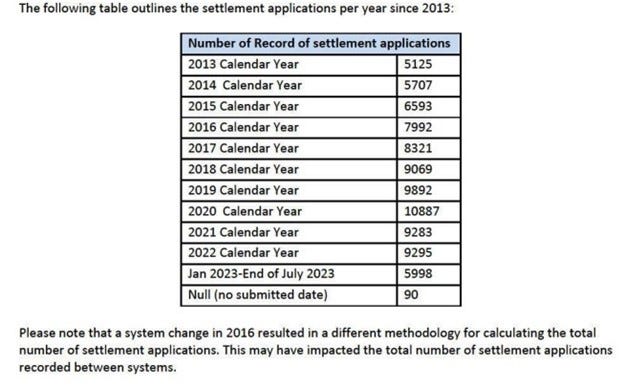New Zealand universities spent $millions silencing academics during covid era
What are those censored stories and where are those individuals now?
NZ Universities were already toxic workplaces. OIA responses reveal clues about how covid made things even worse.
There is plenty of evidence about the long established uniquely toxic workplaces of New Zealand, where bullying is rife. Just talk to advocates like Allan Halse from Culturesafe NZ, read the thousands of forums, one of the numerous articles, reports, research projects or books on the subject. But nothing beats the real-life experiences of so many (I speak from the heart). I’ve written before, including here about the fake ‘research’ that happens in NZ universities, and the international silencing and censorship that occurs to anyone brave enough to speak out.
This may seem surprising for some who believed the media spin about New Zealand’s ‘fair and equitable democracy’. But we know now, to question all those fake narratives. (That includes the ‘Clean, Green, 100% Pure’ bs).
So, knowing a bit already about NZ academia’s corruption and toxicity, the destruction of our Human Rights laws over the past 3+ years was sadly, unsurprising. Dangerous medical interventions without informed consent, coercive and discriminatory tactics and then actual ‘vaccine’ mandates in so many of the NZ workplaces (including universities) was the tipping point of an appalling history of failures in our employment relations and law. And so it continues today.
Like the exemptions for ‘vaccine’ mandates granted (secretly) to thousands of healthcare sector workers – see one of my articles about this topic here or my recent interview (30 mins) with Paul Brennan on RealityCheck.radio here – I wondered whether there were similar clues about the bullying and discrimination in our universities during the covid era. What I have uncovered so far suggests there are.
Before we get started with this can of worms, firstly…
let’s define workplace bullying:
either actual or threatened attacks (physical, verbal or emotional), back-stabbing, gaslighting or undermining.
In schools and colleges and universities researchers describe bullying as:
“systematic mistreatment” of staff in the form of ‘persistent insults, criticism or ridicule; being ignored or treated as non-existent; given demeaning tasks; being set-up to fail; enduring arbitrary removal of responsibilities or given unrealistic work demands.’
I have written about this extensively and for those interested in academics experiences, I thoroughly recommend John Smyth’s book The Toxic University and the others in that series, as an overview of causes, effects and potential solutions.
My international readers maybe surprised to know that in our sparsely populated country of only 5 million, we have eight ‘universities’ in NZ of varying sizes. Bizarrely (and unhelpfully) many compete for the same students (and staff expertise) with similar courses and pathways. (But more on that another time).
Whilst we await further OIA responses about the missing details of the ‘vaccine’ mandate exemptions from other sectors like Corrections, let’s look at other evidence that might provide us with clues about what went on in our universities during that dystopian covid era.
One potential area of investigation is numbers of staff who left and confidential employment settlements made when staff [are forced to] leave, including ‘gagging clauses’ or non-disclosure agreements (NDAs) as a result of ‘employment disputes’.
Now before I continue, I need to explain for those not familiar with this rather unique NZ employment phenomenon:
the Personal Grievance.
Kinda like the UK’s ‘unfair dismissal’ scenario, this is similar to constructive dismissal. NZs Ministry of Business, Innovation and Employment (MBIE) oversee the employment dispute process. According to Employment New Zealand, employees can bring a personal grievance to the Employment Relations Authority (ERA) for a number of complaints, for instance:
· Unjustifiable dismissal (unless the dismissal took place while the employee was on a valid 90-day trial period)
· Unjustifiable action which disadvantages the employee
· Discrimination, sexual or racial harassment
· Duress over membership of a union or other employee organisation
· An employer’s failure to comply with obligations relating to continuity of employment for employees affected by restructuring;
· Disadvantage to an employee due to the employment agreement not meeting legal requirements for: agreed hours of work, availability provisions, reasonable notice periods to be given before cancellation of a shift, reasonable compensation to be paid if a shift is cancelled, secondary employment provisions.
· Unfair treatment of an employee who has lawfully refused work in certain circumstances, eg where an employer engages in adverse conduct for a prohibited health and safety reason in relation to an employee or tries to force or persuade an employee not to perform a function, exercise a power or undertake a role under the Health and Safety at Work Act 2015
· Where an employer, or former employer, takes retaliatory action against an employee who has made a protected disclosure of information.
With regard to the actual amount of compensation agreed upon, MBIE also state:
“Matters to consider in relation to costs may include whether: costs should be able to be fully or partially recovered; the conduct of the parties should be relevant; disbursements (eg, expenses other than lawyer’s fees) should be included; any cost awards can be challenged.”
And that:
“Cost awards should be reasonable and predictable, so a standard recovery rate would usually be used. The parties may also agree between themselves on how costs will be apportioned before the process begins.”
Types of problems that may provide evidence of a PG are broadly described as:
Misconduct and serious misconduct; Bullying, harassment, discrimination; Incompatibility; Medical incapacity; Migrant exploitation.
So we can see that the criteria is ambiguous (what is ‘incompatibility’ exactly?) but potentially, those being discriminated against (i.e. being fired) for not complying to an experimental injection had a case for a PG? Well, perhaps (if we’d not been living in 1984).
Some cultural context
In the UK and other ‘developed’ countries, the concept of constructive dismissal is widely known, and entanglement in it, wisely avoided. That’s because it is not usually in the employer’s interest to go down that route. Unions get involved. The reputation of the company, costs of staff recruitment, training and retention and legal costs all play into the respect for and adherence to, employment laws. Which is probably why the mandate for healthcare workers in the UK was never actually implemented (although it got bloody close).
In contrast, the incidence of PGs in NZ is high. Caselaw is limited - not only because of our sparse population, but because of low salaries, high costs of living and the absence of any formal route of legal litigation. No-one’s entirely sure how many PGs occur, partly because many of these agreements are done ‘outside the system’. However, over the years it appears that PGs have certainly become normalised in the NZ workplace. To make matters worse, unions here are toothless and captured (another aspect that was exacerbated during covid). A payment (say, $2,000) for anyone leaving employment (whether it appears a bog-standard resignation or not) is almost an expectation – by staff and employers. Without going into too much boring detail, there is a 90-day clause by which time, after leaving, a claim for a PG must be made by any ex-staff member. And as the legal system here is broken and expensive, and the employment laws are ambiguous and tend (before covid era at least) to favour the employee, the easiest option for an employer is to make a payment. It’s so common now, that there’s consultants who specialise in settling these disputes and minimising time spent on bureaucratic meetings with the NZ ERA. According to an OIA published on its website, over the last 10 years there has been a steady increase in the numbers of applications for NDAs with MBIE to around 10,000 per year:
Even with the (uh hum) ‘assistance’ of expensive consultants, the nature of many PGs are drawn-out legal processes – so the 2021 ‘vaccine’ mandates for academics would not have been visible in any data until well into 2022. We can see from the table above, there was an unusually high number of MBIE for Settlements (10,887) in 2020, an increase of nearly a thousand (995) settlements made compared to the pre-covid era. But 2022 (the year that we would expect the impact of the ‘vaccine’ mandate impact to be shown) was surprisingly similar to the levels prior to the covid era.
This doesn’t add up. Further investigation is needed in this area – were there applications that were delayed or dismissed during that time? Were staff prevented from applying for a PG?
But what about at the institutional level? What happened at the NZ universities themselves where academic staff were forced to comply or leave through the ‘vaccine’ mandate laws?
gagging clauses in NZ universities: some OIA data
I asked through various OIAs for the five years of data 2018-2023 (as at March 2023 and sometimes up to current day): how many academic staff were recruited and how many left and were awarded financial settlements (either formally defined or otherwise)? I also asked for recruitment information to get a feel for what had happened within their academic departments (and therefore the impact on students’ learning). I also asked for what costs were involved with the NDAs, with varied results. Here is a summary of what information I have received so far, starting with the two universities who did not reveal much useful information, Waikato and Lincoln:
Over the past five years, the University of Waikato hired 174 staff new staff, but 33 staff left. Over those years, 48 staff were awarded NDAs/PGs (i.e. between 2018-2022). Further details were not disclosed.
The much smaller Lincoln University did not release much information in response to my request. However, I discovered that 85 staff members were recruited over the last five years, but 29 left. There were a total of 7 NDAs/PGs during that time. (further details, including costs, were undisclosed).
Victoria University, Wellington had 285 new permanent academic job starters in the past five years, but over this period had a similar number (252) ended. Not good retention then. Regarding the costs of this poor retention, the University stated “There is currently $658,473 budgeted in the current financial year for recruitment” [average cost undisclosed]. Which could mean that an average of $2,310 is spent per staff member recruited. Of those who left during the five years, there were 14 NDAs/PGs. But 6 of these were in 2022. The 6 PGs during 2022 amounted to approximately $98,900 in payments in settlement agreements, giving us a relatively low average of $16,483 per staff member. (incidentally, a breakdown of this was provided and includes payments of $52,600 under s23(1)(c)(i) of the ERA, $45,500 in legal costs and $800 towards counselling). So, in the 4 years prior to 2022, there was an average of 1.75 financial settlements with academic staff, but in 2022 there was 6. Was this substantial increase due to the discriminatory ‘vaccine’ mandates imposed?
The University of Otago volunteered some more detailed data. 1,104 permanent academic staff offers were made between January 2017 to February 2023. But of these, 117 staff have left. Further details of staff retention need investigating. Because of new ‘systems’ in place, there was only detailed information for the past 2 years regarding NDAs/PGs. Between 1 March 2021 -1 March 2023 there were a total of 33 NDAs/PGs for academic staff. The total expenditure for these 33 ‘Confidential Settlements’ was a staggering $1,356,363. (This includes redundancy compensation, S.123 payments, in lieu of notice payments, and retirement gratuities).
Otago University provided a breakdown of this cost by year:
2021: $489,998.47 (10 settlements);
2022: $759,651.54 (20 settlements);
2023 (up to 1 March): $106,713.00 (3 so far recorded).
The total legal costs associated is $77,363.00. So, on average, each confidential settlement equalled $41,101 for University of Otago academics, much more than Victoria University Wellington. As of 13 October 2023, there are 4,220 full time staff at the University of Otago, and projected redundancies are 78 full time academic staff over the next two years (apparently some redundancy processes not yet begun). (Personally, I suspect there are many more budget cuts to come!)
Massey University made a total of 443 academic appointment and 86 full time academic staff left. Between 2018 - 2023 there were 35 NDAs/PGs completed. In the years prior to 2022 there were an average of 6.25 financial settlements with academic staff per year. But in 2022 there was an above-average 8. The amount of these NDAs/PGs is undisclosed.
University of Canterbury estimated that each academic post recruitment costs between $5-8k plus between $10-45k for relocation if necessary – much higher than other estimates mentioned by Victoria. They recruited 190 academic staff over the last 5 years, of whom 13 left, so it would seem there staff turnover is better than other institutions. There were 21 NDAs/PGs over the past 5 years. The total cost for those 21 records of settlement was another staggering $1,963,978. That’s an average of $93,522 per settlement (substantially more than the average pay-out for Otago or Victoria Universities over this time period). Further details were not disclosed. It would be interested to see the breakdown by year of these payments.
The University of Auckland appointed 345 staff and 54 left over the last 5 years. It completed a total of 15 NDAs/PGs, which were broken down as follows: in 2018, 5. In 2019, 2. In 2020, 1. In 2021, 5 and in 2022, 2. As expected, there appears to be an anomaly in 2021. There was an average of 2.6 up until 2021 but then 5 in 2021 and 2 in 2022. Costs were undisclosed.
The Auckland University of Technology (AUT) appointed 356 academic staff members and 58 left over the last 5 years. Compared to other institutions, there was an astounding number of NDAs/PGs: 76 in total. Of these, 48 were in 2020/1 and 12 were in 2022/3. But there appears to be another anomaly here as in 2018 only 3 PGs and 2019 only 7, and yet in 2020 (the beginning of the covid era madness, but before the mandates) there was a drastic increase to 22 and then 15 in 2021. In 2022 levels return to ‘normal’ at 3, but then there are 3 already so far this year. Total costs are undisclosed but if we take the average of the average payouts I have described above ($50,368) that could be a total of $1,863,616 over the last 2 years. Not an insignificant amount. Again, this data raises more questions than it answers.

So what?
What does this summary of info tell us about New Zealand universities? Well first of all, the disclosure of this information is very inconsistent. There are too many gaps and ambiguities to provide a full picture of what is happening in our universities. Whilst I acknowledge that ‘confidential’ settlements should remain confidential to the individuals concerned, there is no reason not to be transparent about the overall costs to the taxpayer of these gagging clauses. My concern is the ethics of these types of settlements. Are these strategies being exploited by those in positions of power at these institutions to silence legitimate cases of discrimination, bullying and censorship?
Secondly, the enormous costs involved - clearly $millions of taxpayers funds are being spent on consultants, the ‘legal teams’, the endless time spent sending emails and in circular meetings, kangaroo courts and meaningless bureaucracy. As Smyth points out in his book, The Toxic University, the PR machinery of these institutions ensures the reality of these toxic workplaces rarely sees daylight.
It takes courage to speak out. I feel sick just thinking about the unnecessary anxiety and stress these processes inflict on individuals. The impact on mental and physical health and well-being should not be dismissed either. It’s not a coincidence suicide rates are so high in New Zealand compared to many other countries. The covid-era policies, corruption and propaganda likely made these already unbearably toxic working conditions, intolerable. As I outlined in my intro, the NZ workplace is toxic, and there are numerous examples how academia is particularly vulnerable to the cultural phenomena of Tall Poppy Syndrome and anti-intellectualism. This excellent report from the New Zealand Initiative highlights just one element of the failure of NZ academia to respond to modern professional best practice – teacher education.
I already knew that NZ academia was corrupt, archaic and heavily captured. But these data provides evidence that covid made that situation much worse.
In most of these institutions listed above, the 2021/2 years presented a marked increase in PGs and associated costs. I know some academics managed to ‘work around’ the ‘vaccine’ mandates – either basing themselves entirely at home and/or taking extended un/paid leave. But it also seems that there maybe a few academics out there who left during the covid era with a financial agreement to be silenced.
Were these individuals willingly silenced? If those academic staff were not legally gagged, what stories could they tell us about that covid era? Could these individuals be the whistleblowers of the future?
What will happen to New Zealand universities in the economic recession that is beginning to weigh us down? Can a new ‘enlightenment model of a modern university’ avoid becoming another toxic workplace, and instead welcome ethical, free-thinking?








The universities...where critical thought is suppressed.
Consider for example the university and research sector-funded The Conversation in Australia.
In 2016 Misha Ketchell, the editor of The Conversation, personally banned me from commenting on The Conversation, because I dared to question the blessed Church of Vaccination.
The corruption in New Zealand universities was evident from my studies of Fluoride Industrial Waste Disposal via the public drinking Water. The Phosphate Fertilizer business shareholdings, political donations and endowments would make a wonderful FOI study. They even experimented giving Fluoride "supplements" to pregnant women.